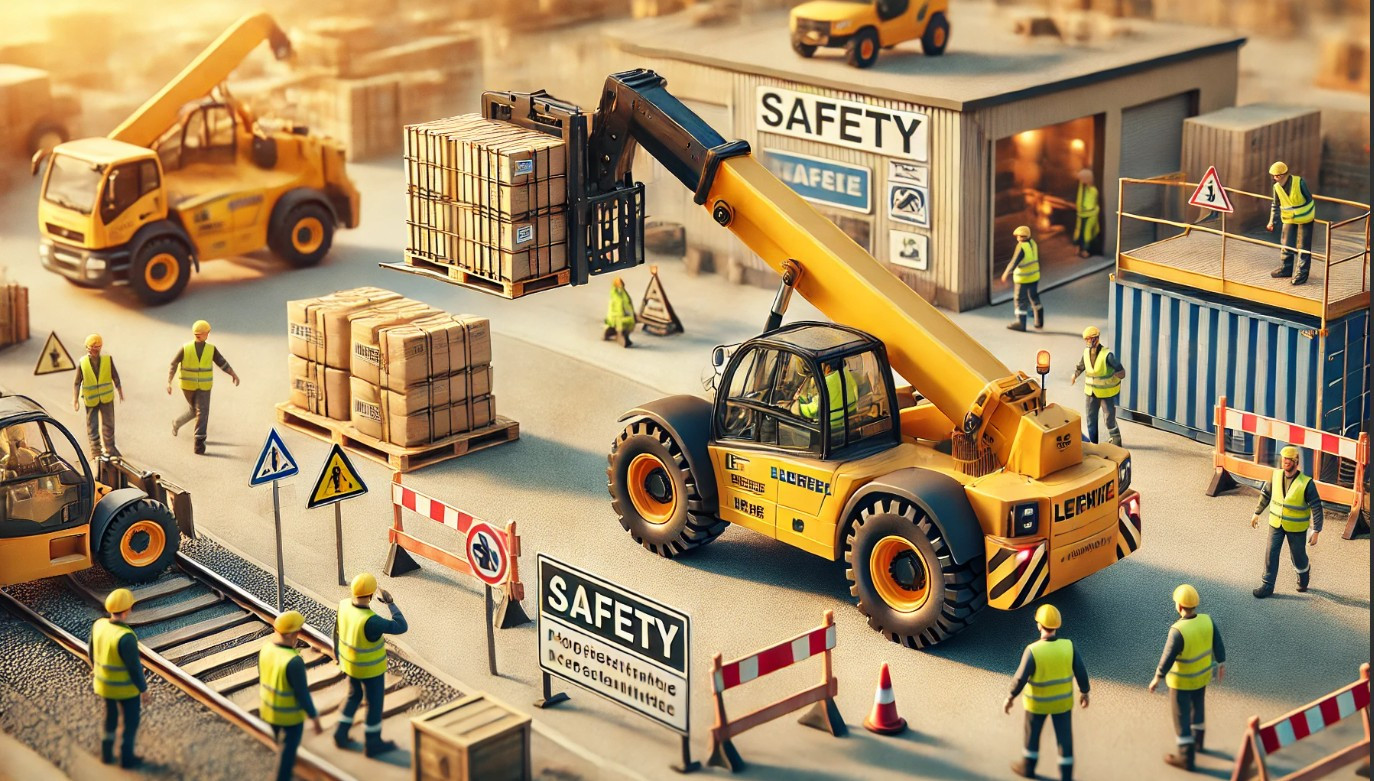Telehandlers are one of the most versatile and powerful pieces of equipment on job sites today. Their ability to lift, extend, and maneuver heavy loads makes them an essential tool in construction, agriculture, and industrial settings. However, operating a telehandler without proper training can be dangerous and costly.
That’s where telehandler training comes in. At Get Drivers Ed, we provide comprehensive telehandler training that covers key safety protocols, operation techniques, and hazard prevention strategies. Even experienced equipment operators are often surprised by the crucial safety tips and techniques covered in professional training.
Let’s dive into the most important safety tips that telehandler training teaches and why they are essential for job site safety and efficiency.
The Importance of Telehandler Training
1. Why Telehandler Safety Matters
Telehandlers may look like large forklifts, but they require specialized training due to their extended reach, lifting capacity, and terrain adaptability. Without proper handling, they can tip over, drop loads, or cause workplace accidents.
Common Risks of Improper Telehandler Use:
❌ Overloading the Boom – Extending the boom too far without proper balance can cause the telehandler to tip over.
❌ Unstable Terrain Maneuvering – Driving on uneven or loose ground without adjustments can lead to rollovers.
❌ Poor Load Management – Incorrect weight distribution can cause load shifts or equipment damage.
❌ Lack of Awareness – Not checking for overhead obstacles, blind spots, or other workers can lead to serious accidents.
At Get Drivers Ed, our telehandler training ensures that operators understand how to navigate these risks safely and efficiently.
Key Safety Tips Covered in Telehandler Training
2. Understanding Load Capacity and Stability
One of the first things telehandler operators learn is how to determine safe load limits and maintain stability.
Essential Load Safety Tips:
✔ Check Load Charts – Every telehandler has a load capacity chart that indicates safe lifting limits based on boom extension and angle.
✔ Balance Your Load – Position materials evenly on the forks to prevent tipping or sudden shifts.
✔ Adjust for Boom Extension – The further the boom extends, the lower the weight capacity.
✔ Keep Loads Low When Moving – Always carry loads as close to the ground as possible to maintain balance.
At Get Drivers Ed, we train operators on proper load management techniques, ensuring that they can lift and transport materials without compromising safety.
3. Navigating Different Terrains Safely
Unlike standard forklifts, telehandlers are designed for rough terrains, but improper driving techniques can still cause accidents.
How to Safely Operate on Uneven Ground:
🚜 Use Four-Wheel Drive When Necessary – Telehandlers have multiple drive modes to help navigate muddy, rocky, or sloped surfaces.
🚦 Reduce Speed on Slopes – Avoid making sudden stops or sharp turns on inclines.
🔄 Stabilize the Equipment – Always check if the telehandler has stabilizers or counterweights before extending the boom.
🛑 Survey the Work Area – Look for hidden dips, trenches, or loose soil before driving.
At Get Drivers Ed, we emphasize real-world terrain training to prepare operators for various job site conditions.
4. Operating the Boom and Attachments Correctly
The extendable boom is what makes a telehandler so versatile, but it’s also one of the most challenging components to control safely.
Boom Operation Best Practices:
✔ Move Slowly and Deliberately – Quick movements can destabilize the load and tip the machine.
✔ Know the Boom's Limits – Never extend the boom beyond its rated capacity.
✔ Avoid Sudden Stops – Stopping the boom abruptly can cause the load to swing or shift dangerously.
✔ Use the Right Attachment – Different jobs require forks, buckets, or winches—using the wrong one can compromise safety.
At Get Drivers Ed, we teach proper boom operation techniques, ensuring that operators know how to extend, retract, and maneuver loads safely.
Situational Awareness and Job Site Safety
5. Recognizing Hazards and Avoiding Collisions
A telehandler’s size and height make visibility a challenge. That’s why operators must stay aware of their surroundings at all times.
Ways to Improve Job Site Awareness:
🚧 Check Blind Spots Regularly – Use mirrors and cameras to spot obstacles and workers.
📢 Use Signals and Spotters – Have a trained guide when maneuvering in tight spaces.
🚦 Stay Clear of Overhead Obstacles – Always scan for power lines, beams, or scaffolding.
🔊 Honk Before Reversing – Alert other workers to prevent accidental collisions.
At Get Drivers Ed, we stress situational awareness training, helping operators avoid job site hazards and protect themselves and their coworkers.
Why Employers Require Telehandler Training
6. Compliance with OSHA Safety Standards
Many employers require telehandler certification to comply with Occupational Safety and Health Administration (OSHA) regulations.
Why Certification Matters:
📜 Legal Requirement – Employers must certify telehandler operators to meet OSHA guidelines.
🏗 Prevents Workplace Injuries – Proper training reduces accidents and injury-related costs.
🚜 Increases Equipment Lifespan – Trained operators handle machines correctly, reducing wear and tear.
💰 Boosts Job Opportunities – Certified operators are more employable and earn higher wages.
At Get Drivers Ed, we provide OSHA-compliant telehandler training, ensuring that workers meet legal and industry standards.
Conclusion: Get Certified and Stay Safe on the Job
Telehandlers are powerful tools, but without proper training, they can be hazardous. Knowing how to handle loads, navigate terrain, operate the boom safely, and stay aware of surroundings is critical for reducing accidents and improving efficiency.
At Get Drivers Ed, we offer comprehensive telehandler certification courses that equip operators with the skills and knowledge needed to work safely and efficiently.
🚜 Start your telehandler training today! Enroll in our OSHA-compliant telehandler certification course and gain the skills to operate equipment safely while advancing your career.


